Alan Wake 2 review: on the other side
Remedy’s long-awaited sequel dials up the horror and weirdness
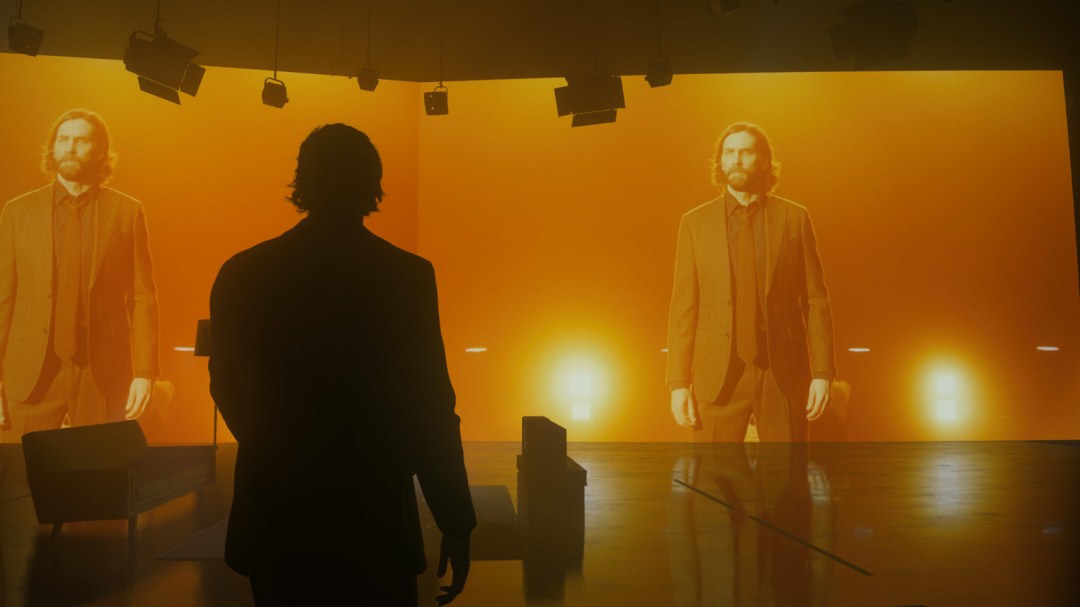
Stuff Verdict
As creatively weird and daring as a game of this scale gets. Perhaps be patient for a couple more months and wait for an inevitable discount, and then it might be easier to call this a masterpiece in
Pros
- Drenched in terrifying atmosphere
- Live-action elements work surprisingly well
- Alan’s sections get very inventive and weird
Cons
- Combat still its weakest link
- Scary progression-blocking glitches
Introduction
13 might be an unlucky number for some, but for fans of the cult classic 360 exclusive, since remastered for more platforms, it’s been a 13 year wait for one of gaming’s more unconventional protagonists, a tortured novelist wielding a sort of magical flashlight, to make their return.
With that in mind, it’s also one of Remedy’s most ambitious games to date, not just taking inspiration from the world of television but even incorporating its own live-action sequences in-game, while it also connects itself to the rest of the Finnish studio’s history, though still framed in a way for complete newcomers to enjoy.
But just how much does it succeed in pulling off this new chapter? Dare you enter the Dark Place this spooky season?
Dark Saga
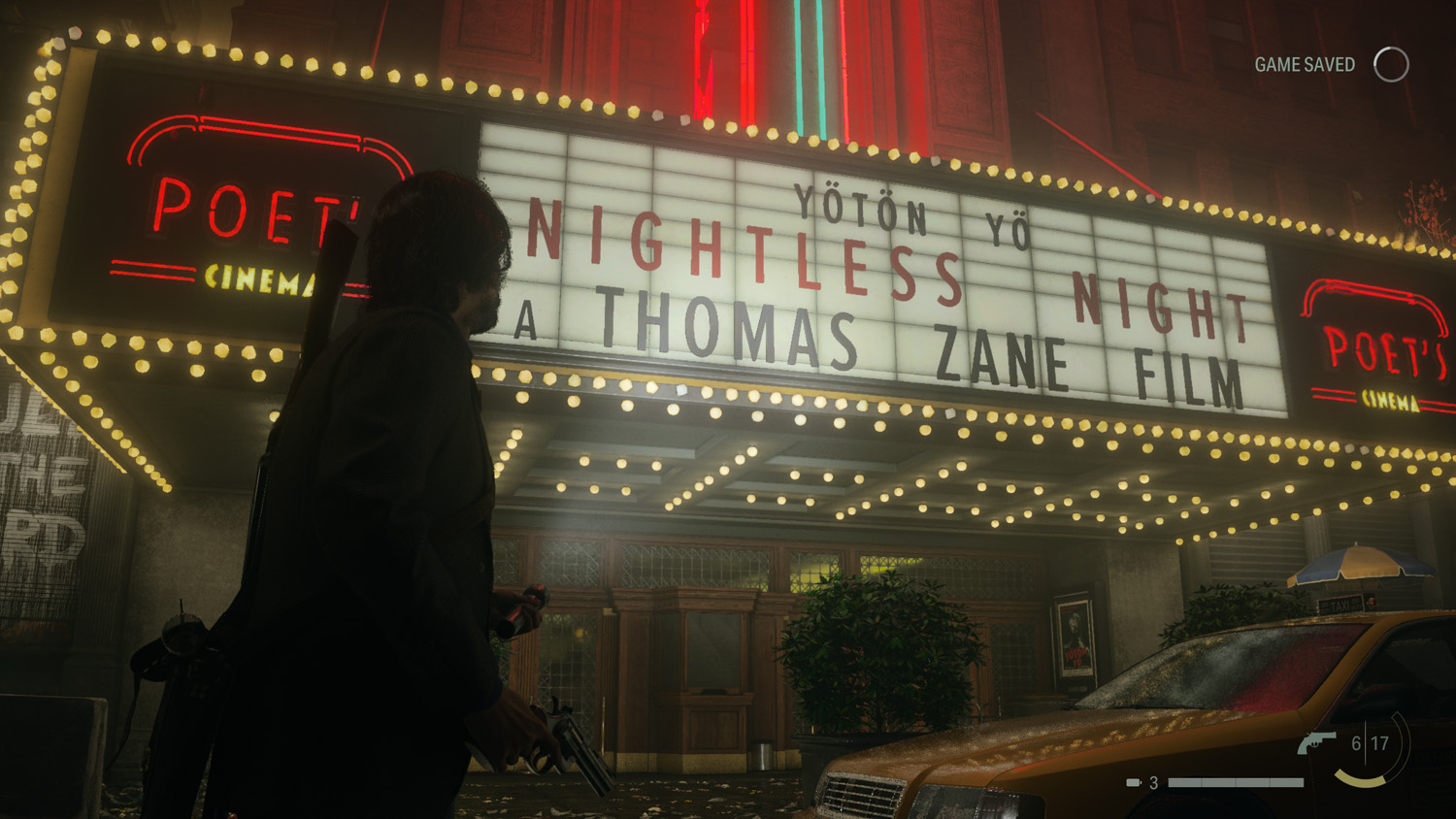
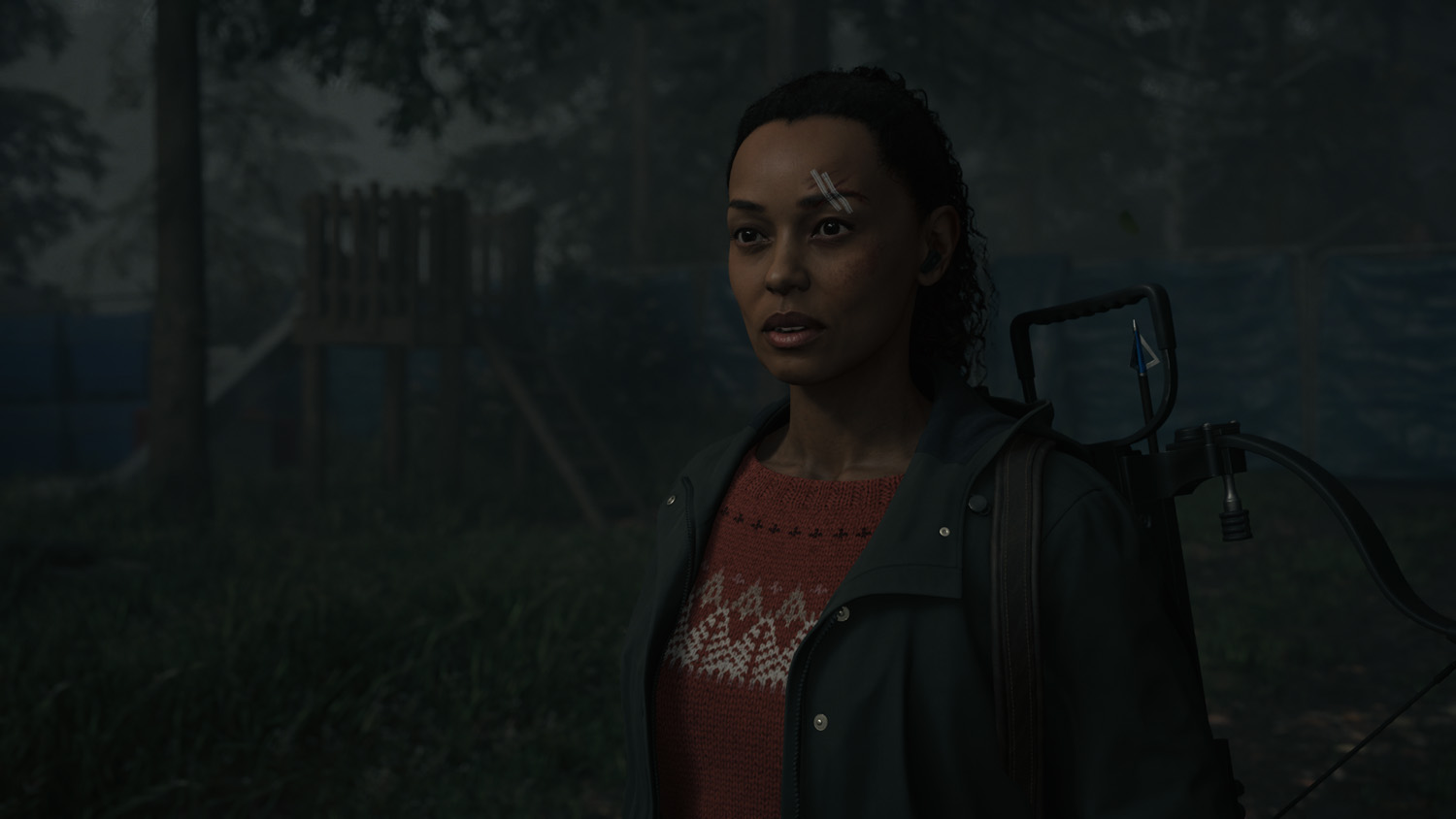

Although the first game naturally took inspiration from the horror fiction of Stephen King, Alan Wake 2 begins with strong True Detective vibes as you start not in the shoes of the titular writer but as FBI agent Saga Anderson (played by Melanie Liburd), assigned to investigate a grisly murder that’s reportedly the work of a cult that have also turned into the ‘taken’. In any case, her perspective helps ease newcomers into Remedy’s fictionalised and disturbing version of the Pacific Northwest, while she comes fleshed out with her own stakes and personal mysteries to solve.
Played between her and Alan, Saga arguably gets more screen time, though that’s down to how her chapters are the more expansive, featuring large environments to explore and revisit, from abandoned theme parks to an elderly nursing home, and of course the small town of Bright Falls, including some oddball characters fans of the first game will recognise. It all manages to feel very claustrophobic, thanks to a close over-the-shoulder camera while everything’s so dark you’ll want to keep your flashlight on pretty much the whole time, even if you look up to find it’s actually daytime.
Heavy atmosphere
The atmosphere is thick with dread, the sound design getting appropriately unnerving when you approach a new unknown path. Fair warning that there are plenty of jump scares, albeit more in the psychological vein rather than monsters jumping out at you. Indeed, combat is still one of the weaker elements, as you stick to a pattern of weakening or exposing enemies with your flashlight before taking them down with your firearms. The new perspective does improve things slightly, as does a handy dodge button that does the equivalent of staggering an enemy when timed just as you’re being attacked, but just don’t expect Resident Evil 4. Thankfully, the game seems to be aware of this and generally keeps combat to a minimum, or gives you the option to just leg it.
To its credit, we can more favourably compare Alan Wake 2 to being the closest we might get to a modern Silent Hill 2 – that is a survival horror game that also had pretty naff combat, but more than made up for it with amazing atmosphere and narrative, conceptually twisted enemies, as well as memorable and unusual uses of music.
Mind games
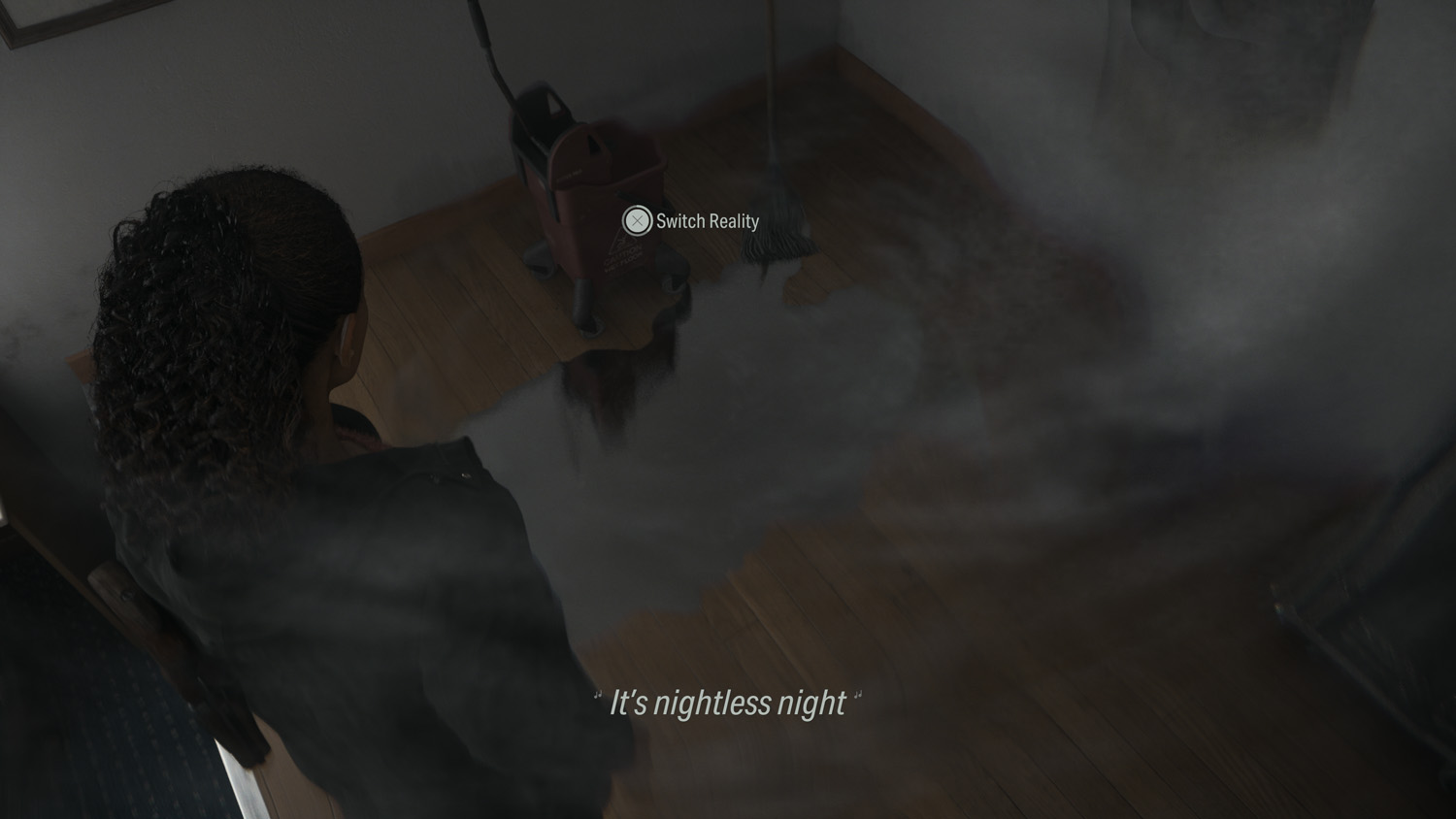
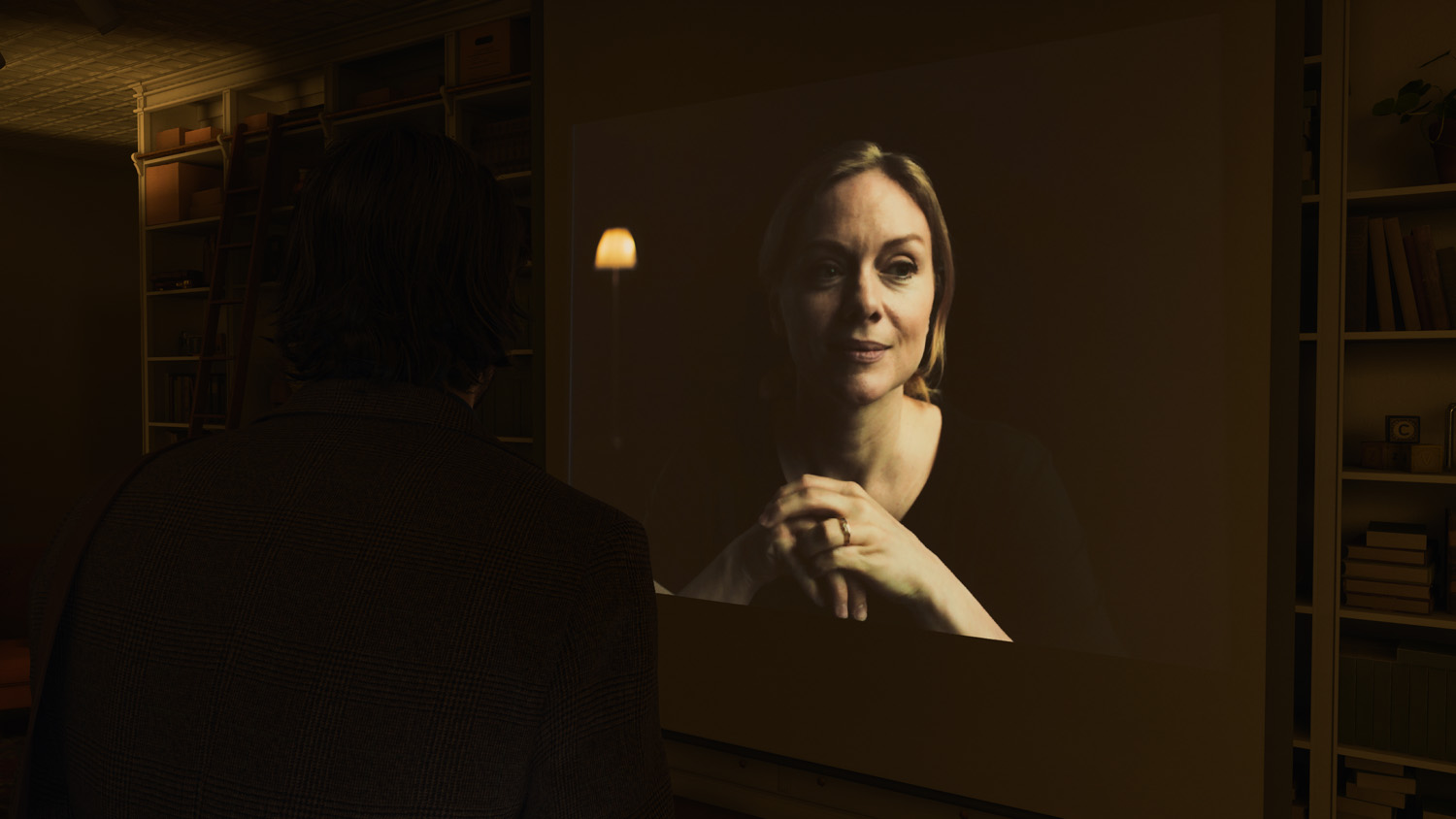
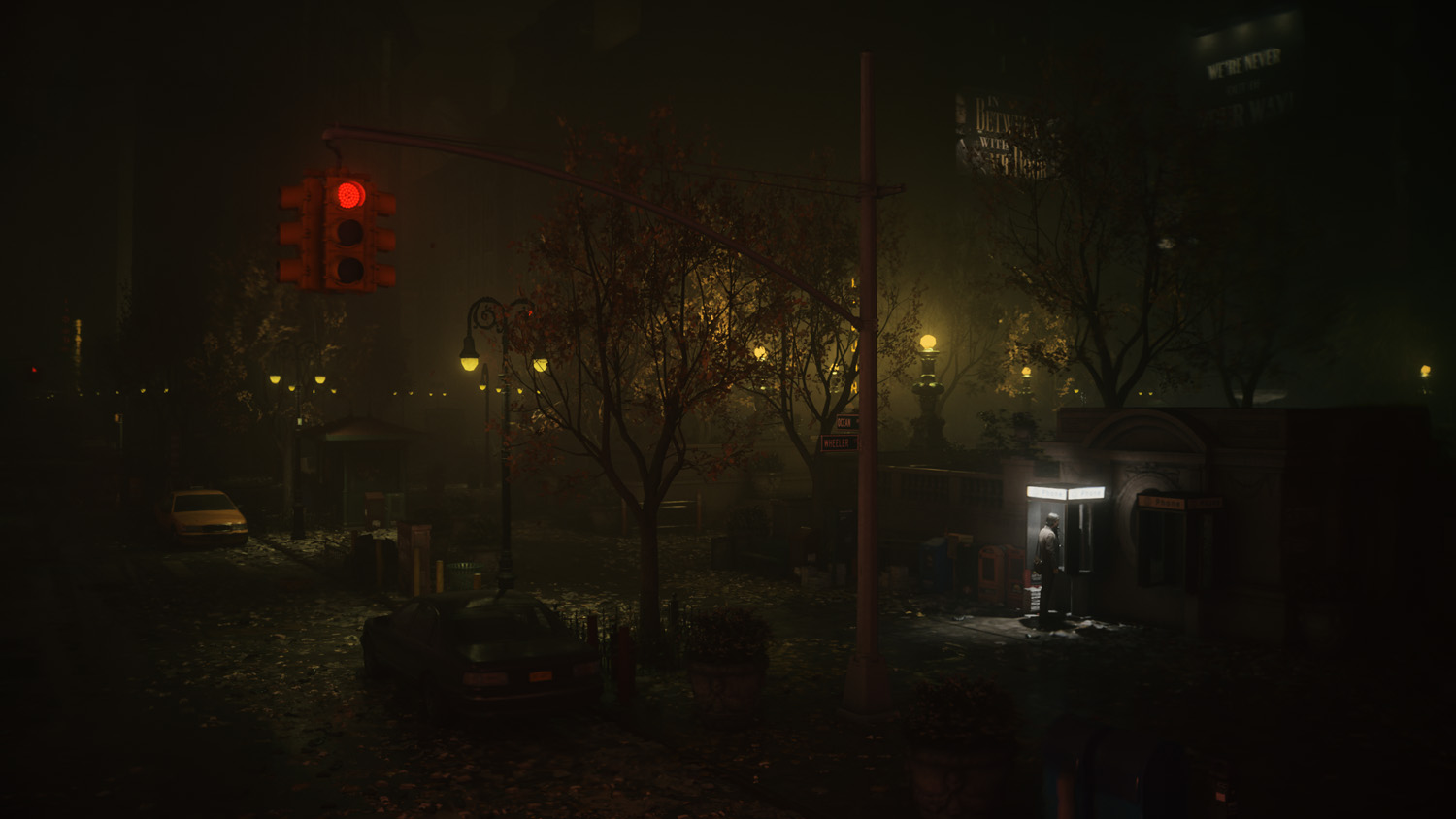
Where Alan Wake 2 succeeds is in having some decent puzzles that are crafted well enough to get your head scratching but not stuck, and without too much backtracking. Keeping a handle on clues to both optional puzzles and the overall story is also done through Saga’s Mind Place, basically a physical manifestation of her mind where you can join the dots of evidence you’ve accumulated much like the case boards of countless police procedurals you’ve watched. At times it feels like a more interactive way to engage with plot summaries and lore that another game would just have as menu screens, but there are also times you have to actively add pieces to the board in order to progress the story.
It’s playing as Alan however where the game saves most of its coolest and weirdest ideas, a benefit when you’re trapped in a dark alternate reality that can be shifted around. Besides using his flashlight on enemies, he also picks up the Angel Lamp, which can be used to absorb light from one source, such as a lamp post or headlights of a police car, then transfer it to another, which for weird reasons also changes the arrangement of nearby environments. This gets quickly one-upped by Alan’s authorly talents, where he’s able to think up new twisted story ideas, and then use them to physically alter the scene in front of you. Visually, these are a horrific treat, and they’re structured so that you come up with even darker story ideas to progress until you reach the destination you need to get to, and its grisly conclusion.
Behind the camera
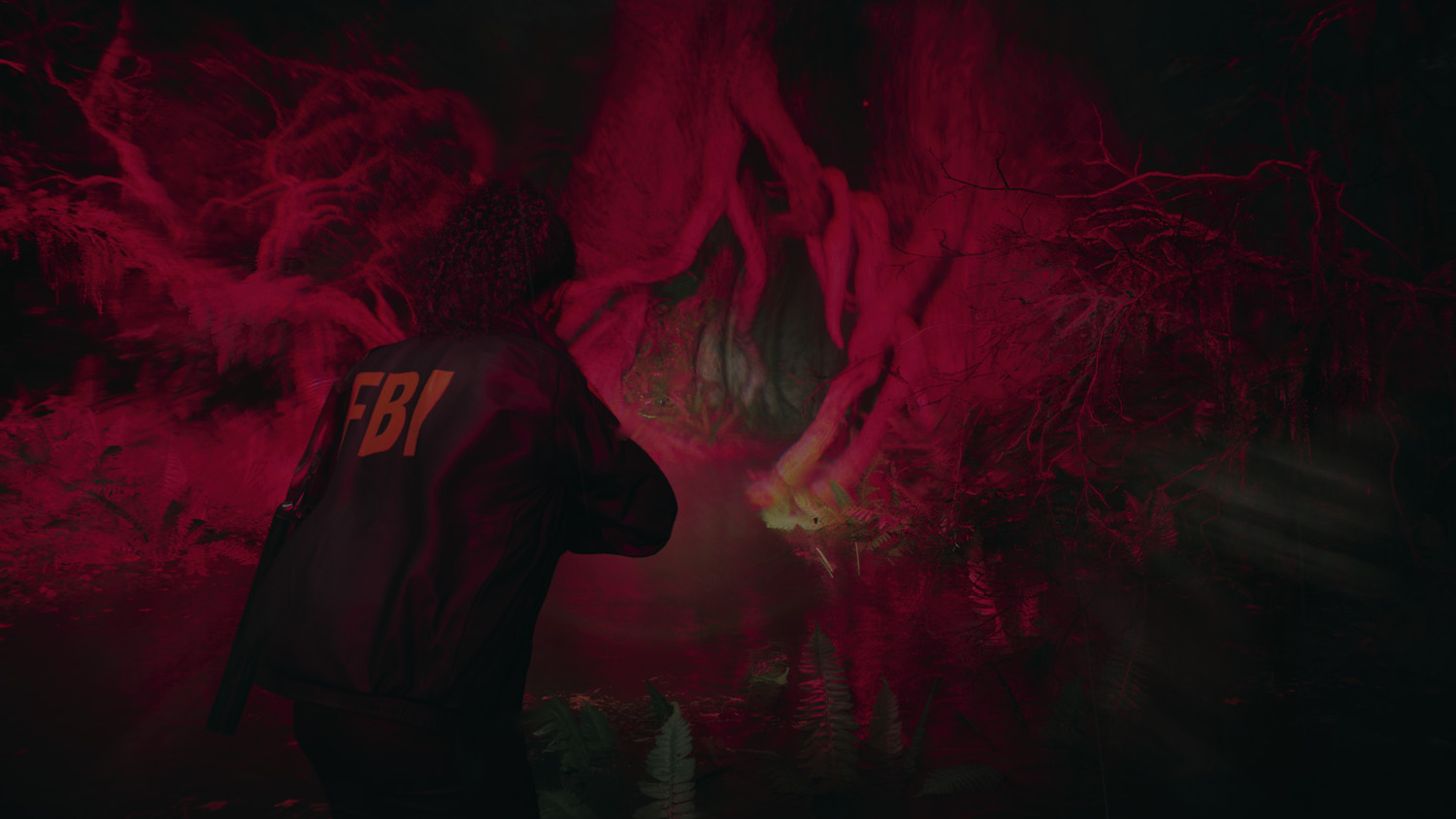
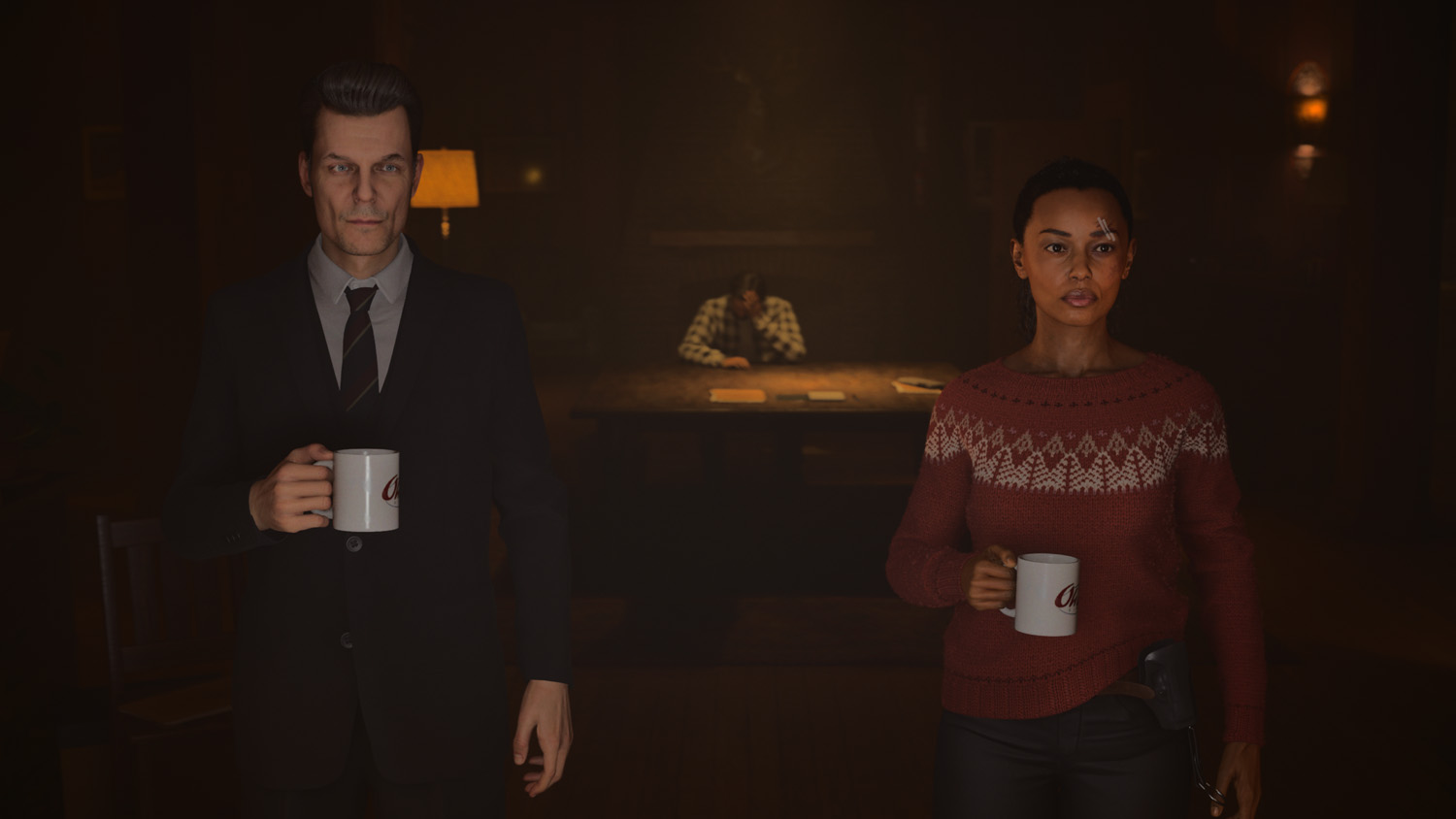

Perhaps the most inspired element of Alan Wake 2 doesn’t even involve gameplay as such but rather how it incorporates live-action video, something Remedy has already experimented in the past with the rather awkward TV-show format of Quantum Break and footage within-the-game method as in Control, but here it manages to be a compelling blend of the two.
Going from between live-action to 3D character models might have an uncanny effect that takes you out of the experience, but in the weird realities of the Dark Place or Mind Place, that serves it perfectly. There’s even a meta within a meta going on here too since Alan is played by two actors (physically by Ilkka Villi, voiced by Matthew Porretta), while Saga’s FBI partner Alex Casey has his likeness modelled after the game’s creative director and writer Sam Lake, something he had of course also done for the original Max Payne.
Live action love
Far from a gimmick, the live-action elements work to convey emotions or sequences that just wouldn’t have the same effect with 3D character models (well, at least if you’re not Naughty Dog), be it the eerie Lynchian talk show interludes, the cheesy commercials you find on the TV starring two Finnish brothers, or a showstopping musical number incorporated into one level that just has to be seen and heard to be believed.
It’s a very cinematic (or televisual is perhaps the more correct word) game then, but one that isn’t just aping other shows and has its own unique identity, certainly unlike any blockbuster game we’ve played this year. Fans of Remedy’s previous game Control will also be thrilled to find quite a lot of crossover here, including new chapters being introduced with big and bold fonts as well as a cameo from a certain janitor, though thankfully this game has easier-to-read maps.
Need a remedy
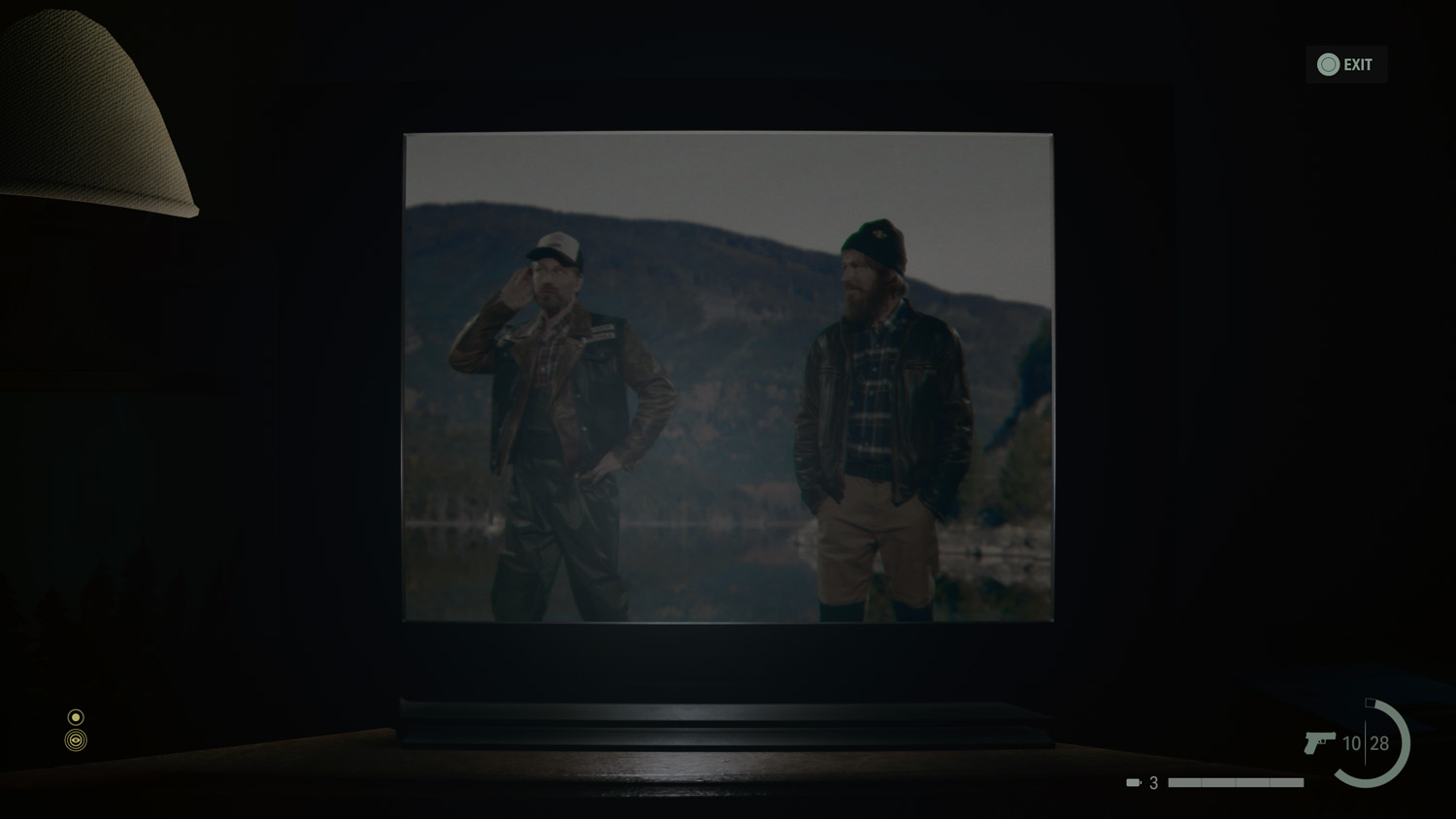
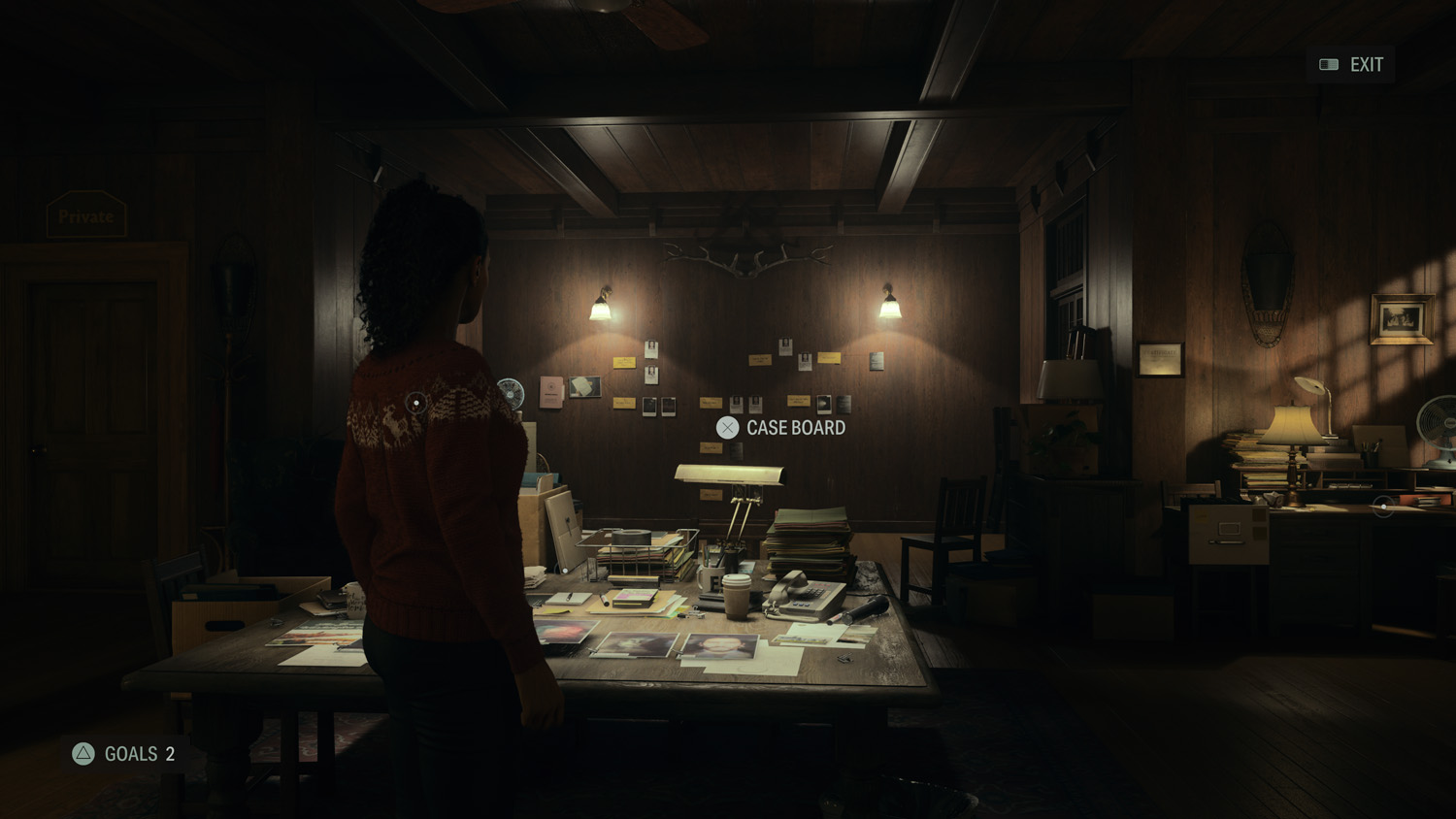
But while it almost feels like we could’ve easily recommended Alan Wake 2 as one of the best games of the year, our playtime wasn’t without caveats. As mentioned earlier, if you like your survival horror with solid combat mechanics, this isn’t the one for it, but fans going in will likely already concede this.
Much less forgivable however was encountering glitches that impacted our ability to review the game. A few cosmetic issues where textures seemed to not load correcting can be overlooked, especially given the other weird filters the game occasionally has, but then there were times we found ourselves stuck in scenery and unable to escape without reloading the save.
The worst however was a glitch that rendered progressing the game impossible on PS5, resulting in us having to play the rest of the game on PC with other save states provided by the developer. While we’ve been informed these bugs have been found and dealt with since, having review access arriving so close to launch means we don’t feel completely reassured.
There’s also of course concern over forking out for a narrative-rich game that’s only available digitally, even on consoles. An announcement that there will be a new game plus mode that includes a new difficulty setting and what’s been described as an “alternative narrative” should offer incentives to get your money’s worth from Alan Wake 2 more than once, but this is only coming after launch at an unconfirmed date.
Alan Wake 2 verdict
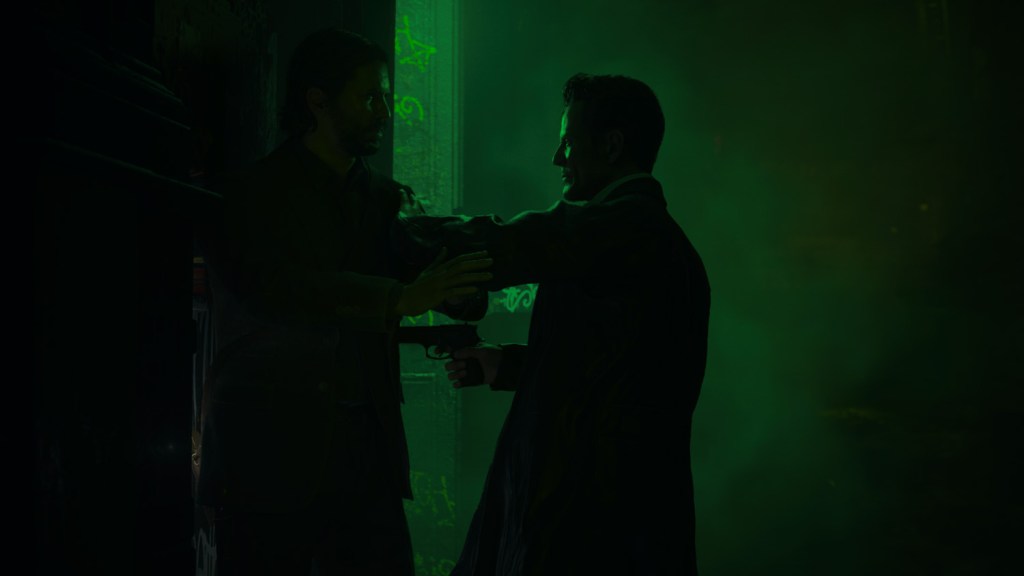
In many ways, Alan Wake 2 has been worth its 13 year wait, with Remedy pooling together its experiences with not just the original game but its other experimental and distinct titles like Quantum Break and Control to make its biggest and boldest game to date. It’s as creatively weird and daring as a game of this scale gets, a work of uncompromising art in dialogue with old horror tropes as its characters wrestle control back over the narrative.
Yet it’s also a game we cannot completely recommend, at least not at launch, owing to some game-breaking bugs and other content yet to be added, even if this would be the perfect game to play this Halloween. Perhaps be patient for a couple more months and wait for an inevitable discount, and then it might be easier to call this a masterpiece in the survival horror genre that deserves to be uttered in the same breath as in years to come.
Stuff Says…
As creatively weird and daring as a game of this scale gets. Perhaps be patient for a couple more months and wait for an inevitable discount, and then it might be easier to call this a masterpiece in the survival horror genre.
Pros
Drenched in terrifying atmosphere
Live-action elements work surprisingly well
Alan’s sections get very inventive and weird
Cons
Combat still its weakest link
Scary progression-blocking glitches
- Related: Buy Alan Wake II
